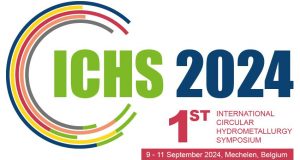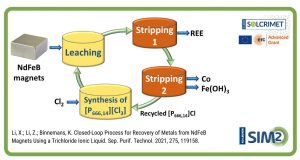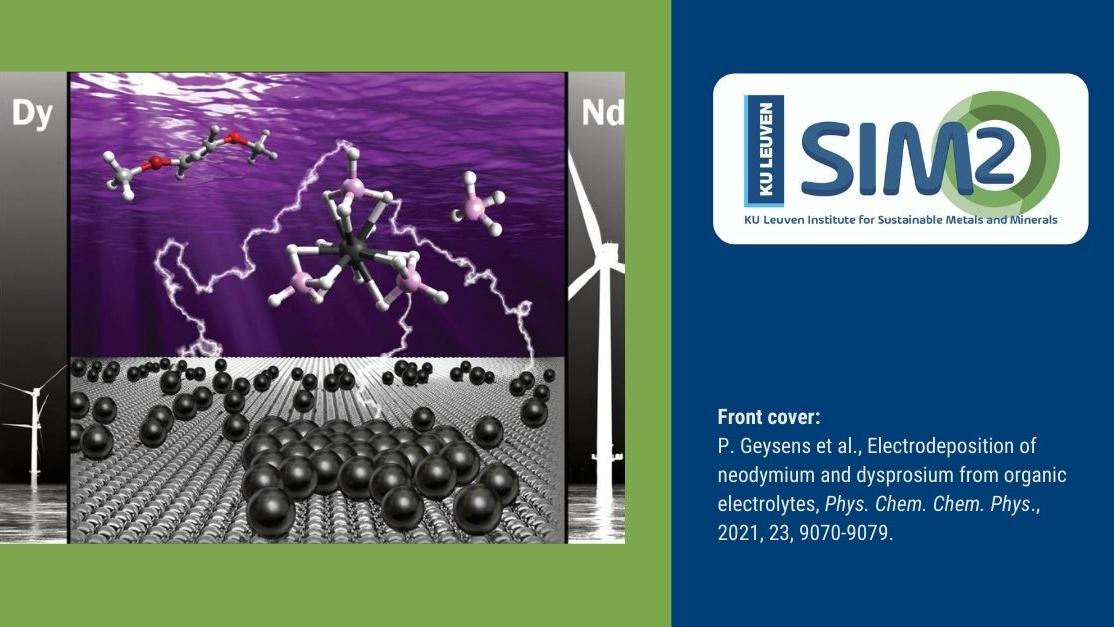In the framework of the ETN DEMETER project SIM² KU Leuven researchers Gwen Bailey and Karel Van Acker have published a milestone paper in the Journal of Sustainable Metallurgy on the sustainability aspects of hybrid/electric vehicles. The paper was co-authored by Leiden University.
How green are hybrid/electric vehicles?
It is clear that hybrid/electric vehicles [(H)EVs] are only as green as the materials and energy that they use. According to MIT, the production and processing of rare earth elements (REEs) found in (H)EVs come with their own hefty environmental price tag (K. Bourzac, “The Rare-Earth Crisis,” MIT Technol. Rev., 114(3):58–63, 2011). These damages include radioactive wastewater leaks and ‘slash-and-burn processes’ required to manufacture and separate REEs. Some life cycle assessment (LCA) studies found that the carbon advantage of an electric vehicle over an internal combustion engine vehicle is small considering the production/manufacturing and end-of-life stages (C.-W. Yap, “China Ends Rare-Earth Minerals Export Quotas,” Wall Street Journal, updated 5 Jan. 2015; D.S. Abraham, “The War Over the Periodic Table,” Bloomberg View, 23 Oct. 2015).
However, sustainability is not only about environmental impacts, but also concerns other sustainable development principles such as economic viability and social well-being. Permanent magnet (PM) rare earth motors are most widely used in the (H)EV industry (see e.g. EU ETN DEMETER animation video), but the price volatility of REEs does not make them an economically sustainable option.
The way forward
The research involving the potential social impacts of the extraction and use of rare earths for the automobile industry is examined. This review addresses the technical aspects of PM motors and how it contributes to or withdraws from the sustainability of (H)EVs. This paper undertakes a review of the literature and the present situation of sustainability of REEs in the electric vehicle industry. Furthermore, this paper highlights the areas of sustainability research considered by academic and industrial representatives to be essential for cleaning up the clean technology. The intention is not to declare rare earth PM motors sustainable, but to analyse their contribution to sustainability in terms of technical, social, environmental, and economic aspects. Ultimately, the potential opportunities toward a more sustainable rare earth PM motor are revealed.
Key data paper
- Full reference of paper: Bailey, G., Mancheri, N. & Van Acker, K., Sustainability of Permanent Rare Earth Magnet Motors in (H)EV Industry, J. Sustain. Metall. (2017). doi:10.1007/s40831-017-0118-4
- Link: http://link.springer.com/article/10.1007/s40831-017-0118-4
- About the (first) author: Gwen Bailey – Gwendolyn served as a Conservation Intern at Environment Texas, where she engaged in community outreach activities to support the Save Texas Rivers Campaign and other environmental initiatives in the state of Texas. Gwendolyn spent six months completing an internship in the packaging department at Carrefour in Belgium, the largest grocer in Europe. She helped develop a method to assess the environmental impact of certain sustainable materials used in Carrefour’s own brand packaging. Now, as of October 2015, she is in the European Horizons 2020 fellowship program as a Marie Curie Early Stage Researcher. She also served as the representative of the retail sector for the European Commissions Product Environmental Footprint directive. This initiative, also known as PEF, is a project of the DG Environment that uses Life Cycle Analysis to provide industry stakeholders and their customers with a single environmental score for their organizations and products. In 2014, she also received her Leadership in Energy & Environmental Design (LEED) certification through the U.S. Green Building Council. Now that she’s a recent Master of Science in Environmental Management graduate, she is looking forward to applying her knowledge of sustainable materials to the automobile and recycling sectors.

Gwen Bailey in the EU ETN DEMETER video

 European Training Network for the Design and Recycling of Rare-Earth Permanent Magnet Motors and Generators in Hybrid and Full Electric Vehicles (DEMETER)
European Training Network for the Design and Recycling of Rare-Earth Permanent Magnet Motors and Generators in Hybrid and Full Electric Vehicles (DEMETER)



